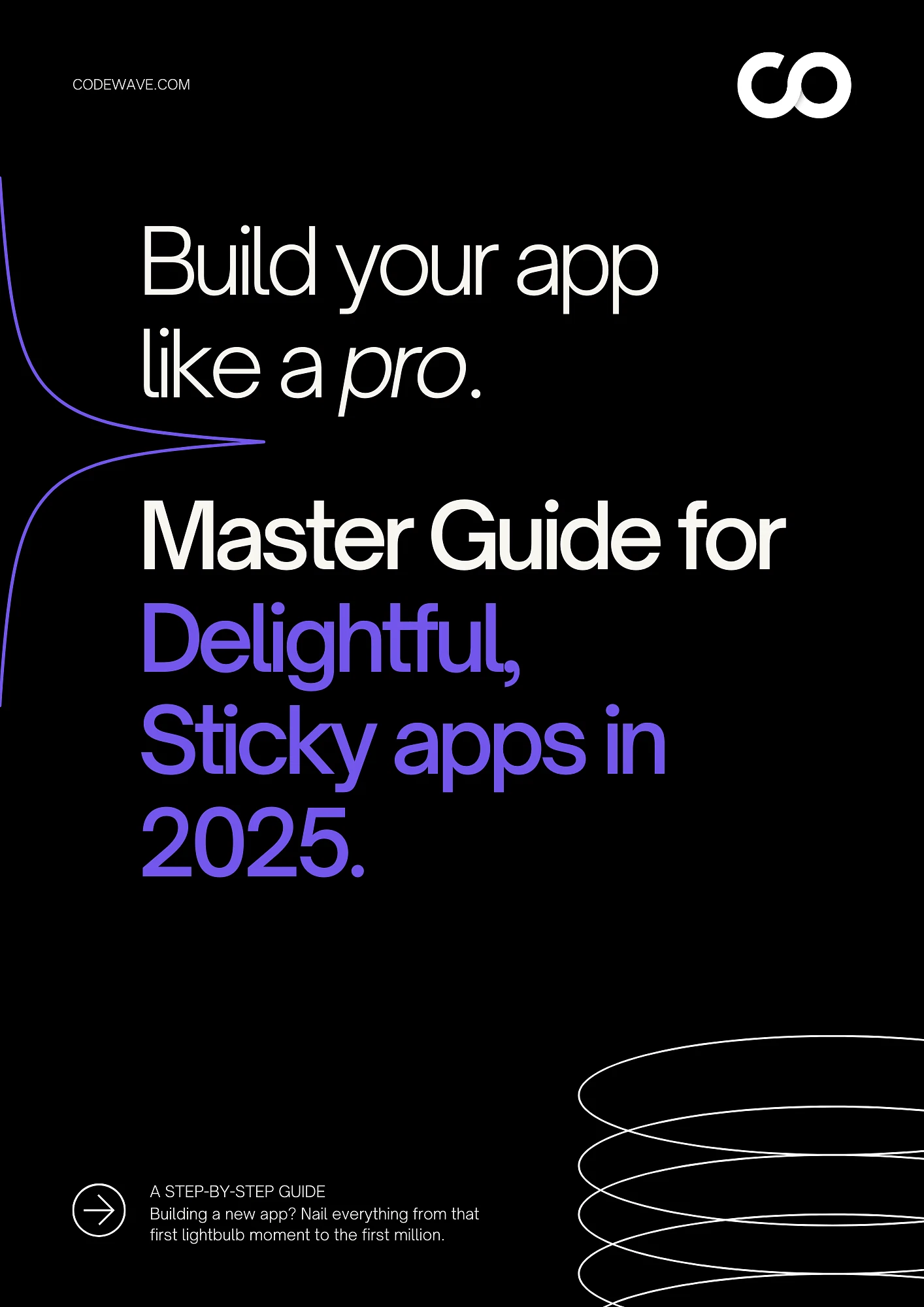Australian digital teams understand that seamless UI and UX are not just design concerns; they are core business drivers. According to reports, every $1 invested in UX brings a return of $100, delivering a 9900 % ROI. That kind of impact is especially important in Australia, where high mobile usage, digital government adoption, and growing customer expectations shape how platforms must perform.
But selecting a UI/UX partner in Australia is not simply about finding a good designer. It is about aligning with a team that understands local user behaviour, sector-specific goals, and the need for measurable outcomes. Whether the focus is conversion improvement, reduced churn, or better onboarding, the right design partner turns interface decisions into growth opportunities.
This guide breaks down what Australian product teams need to know before choosing a UI/UX partner, from local expertise to long-term value creation across digital experiences.
Key Takeaways
- UX drives business impact across onboarding, retention, and conversion
- Australian teams need partners who understand local behaviours and compliance
- Strong design reduces rework, improves speed to market, and lowers support costs
- Post-launch iteration is key to sustaining growth
- Look for measurable outcomes not just visual appeal
Why UI/UX Design Is Critical for Business Outcomes in Australia
UI and UX design have become strategic differentiators for businesses in Australia; not just in terms of aesthetics, but in how they drive customer engagement, retention, and revenue. In a market where users expect seamless digital experiences across banking, healthcare, education, and ecommerce, strong design directly influences whether products succeed or stall.
How UI/UX Impacts Business Performance
A well-designed interface is not just a front-end layer. It’s a multiplier for business value. Teams that invest in UX early see lower churn, fewer support tickets, and faster adoption especially in sectors where trust and usability are deal-breakers.
Key business outcomes influenced by design:
- Higher conversions through optimised landing pages, CTAs, and checkout flows
- Increased user retention due to easier onboarding and more intuitive navigation
- Reduced customer support costs by enabling better self-service and clearer task flows
- Faster time-to-market by validating designs with real users before development
- Greater accessibility compliance, essential for public sector and enterprise procurement
Australian Market Dynamics Driving Design Investment
With growing digital competition and increasing user expectations, Australian businesses can no longer afford to treat UI/UX as a post-development add-on. Design maturity is now a leading indicator of a product’s long-term viability.
Enterprises and startups alike are rethinking how design fits into their go-to-market strategy. That includes co-designing with stakeholders, localising for regional behaviours, and ensuring WCAG accessibility compliance from day one. These shifts are turning UI/UX into a measurable driver of customer success and long-term ROI.
Also read: Effective SaaS UX Design Practices to Boost Retention and User Engagement
Criteria for Choosing a UI/UX Partner
UI and UX influence more than just interface aesthetics; they shape how fast products scale, how efficiently teams launch features, and how effectively businesses capture value. In the Australian market, where user expectations are shaped by high digital standards across sectors, selecting the right partner is about strategic alignment as much as design execution.
Here are the core factors Australian product and digital teams should evaluate:
1. Industry Experience and Domain Alignment
Seek teams that have delivered results in your specific sector. Whether it’s fintech platforms requiring KYC flows, aged care apps with accessibility mandates, or local council portals prioritising WCAG compliance, domain experience accelerates delivery.
What to look for:
- Familiarity with industry-specific compliance (ASIC, TGA, Privacy Act)
- Real-world use cases across healthcare, government, logistics, SaaS, and eCommerce
- Ability to design for both B2C and B2B journeys in an Australian context
2. Proven Business Outcomes
Focus on partners that measure success through ROI, not just design quality. Ask for data on improved conversion rates, customer onboarding speed, reduced drop-offs, or increased feature adoption.
What to look for:
- Before/after metrics from usability improvements
- CRO or retention impact linked to design changes
- Case studies with actual KPIs tied to business growth
3. Team Fit and Collaboration Style
Design is collaborative. Ensure the team matches your delivery model, understands local work culture, and adapts to Agile, hybrid, or startup cadence. For Australian teams, async clarity and proactive check-ins are critical.
What to look for:
- Integration model with internal product or dev teams
- Experience working with teams in Melbourne, Sydney, Brisbane, or regional hubs
- Clear escalation paths and shared sprint planning processes
4. Australian Portfolio and Regional Insight
UI/UX decisions vary across markets. Teams with on-ground experience in Australia better understand design conventions, user behaviours, and accessibility expectations.
What to look for:
- Localised design decisions such as address formatting, payment systems, Medicare ID validation
- Familiarity with mobile-first experiences preferred in Australian consumer markets
- Regional testing and rollout strategies that account for Australian devices and networks
5. Flexible Pricing Structures
Avoid one-size-fits-all billing. Depending on your product stage, different pricing models; from design sprints to monthly retainers. You can choose to suit different timelines and risk levels.
What to look for:
- Tiered pricing options based on scope (MVP vs full product)
- Transparent resourcing breakdowns for large-scale or multi-phase projects
- Flexibility to pause, scale, or shift focus without high penalties
6. Post-Launch Optimisation and Ongoing Value
Strong partners stay engaged after go-live. Look for UI/UX teams that provide data-driven iteration cycles and help translate user feedback into meaningful design updates.
What to look for:
- Regular UX audits based on heatmaps, analytics, and feedback
- Built-in review loops tied to feature rollout or quarterly performance
- Proactive suggestions for improvement tied to business KPIs
Also read: What is UX Design? Differences Between UI and UX design
Top UI/UX Agencies in Australia
When choosing a UI/UX partner in Australia, product leaders should evaluate more than portfolios. Client outcomes, cross-functional agility, and localisation insight all matter especially when the goal is to move fast without compromising quality or compliance.
Here are top-rated agencies based on performance metrics, client feedback, and specialisation across Australian digital markets:
1. Goji Labs (Melbourne)
Goji Labs is known for product-led UX that converts. With a 5.0 Clutch rating and hourly pricing around $149, the team specialises in MVP design and scalable interfaces. Their work focuses on increasing user retention, improving onboarding flows, and validating product-market fit for Australian startups and SMEs.
Standout strength: Deep integration of UX with business growth goals, backed by measurable conversion results.
2. Momentum Design Lab (Sydney)
With an award-winning reputation in enterprise UX, Momentum Design Lab serves high-scale Australian companies looking to modernise legacy systems or streamline complex workflows. They blend service design with user research to create efficient interfaces for fintech, logistics, and public sector clients.
Standout strength: Cross-platform enterprise UX with a focus on compliance-heavy sectors.
3. Orizon Design (Remote with Australian clients)
Orizon consistently receives 100% positive feedback for its collaborative approach and end-to-end impact. They offer tailored design sprints, clear stakeholder communication, and post-launch iteration support. Their strength lies in building intuitive, elegant interfaces for SaaS, finance, and health platforms.
Standout strength: Strong design collaboration culture and seamless handoff to engineering teams.
4. DreamX (Brisbane)
DreamX focuses on UI/UX for mobile-first startups, ecommerce brands, and EdTech platforms across Queensland and nationally. They blend performance UX with lean design processes to accelerate product cycles and reduce bounce rates.
Standout strength: Fast, conversion-optimised designs tailored for mobile users.
5. Ofspace (Australia-wide)
Ofspace ranks among the top UI/UX firms for Australian SMEs, thanks to its balanced approach to UX research, interface clarity, and cost-efficient delivery. Their work in education and local government has helped drive accessibility and reduce support costs.
Standout strength: UX research backed by Australian user behavioural insights.
6. LinkUp Studio (Working with APAC clients)
Though based internationally, LinkUp Studio works with several Australian clients on design localisation and scalable product UX. They specialise in high-fidelity prototyping, system-wide design patterns, and design documentation that aligns with agile builds.
Standout strength: Smooth collaboration with Australian dev teams and modern component libraries.
Future Trends: What’s Next in UI/UX Australia
As Australian businesses scale their digital platforms, UI and UX trends are shifting from surface-level polish to deeper business alignment. These upcoming shifts are not just about technology adoption; they are about unlocking new customer value, improving efficiency, and reducing time to market. Here are the key trends shaping UI and UX in Australia, along with the business outcomes they enable.
AI-enhanced Interface Design
AI is changing how teams build and personalise interfaces. From predictive search suggestions to automated layout generation, AI is helping teams design faster and smarter.
What it enables:
- Faster wireframing and prototyping through AI-assisted design tools
- Personalised user flows that adapt based on behaviour and intent
- Lower design-to-dev time through automated component generation
For Australian teams working on tight release cycles, AI-enhanced design helps accelerate go-to-market while still meeting high user experience expectations.
Voice and Conversational UX
With increased adoption of smart assistants and messaging platforms, conversational design is becoming essential. This is especially relevant in sectors like government services, healthcare, and logistics where form-based interfaces can limit usability.
What it enables:
- Improved accessibility for users with low digital literacy
- Faster task completion for routine processes like bookings or payments
- 24/7 user support without growing support headcount
For Australian public services and large B2C platforms, conversational UX helps reduce support load and improve user satisfaction across demographics.
Accessibility as a Design Standard
Compliance with WCAG guidelines is now a procurement prerequisite in many Australian sectors, especially government, education, and health. But accessibility is also proving to be a competitive advantage.
What it enables:
- Expanded user base by including older users, people with disabilities, and rural communities
- Higher engagement and longer session times through frictionless design
- Reduced legal and reputational risks tied to accessibility non-compliance
Treating accessibility as a default helps businesses future-proof their platforms and appeal to more users without added redesign cost later.
Immersive Experiences for Retail and Real Estate
AR and VR are no longer experimental. In Australia’s property and retail sectors, immersive design is helping customers visualise spaces, customise products, and make decisions faster.
What it enables:
- Higher conversion rates through interactive product demos or virtual walkthroughs
- Lower returns in ecommerce by helping buyers better evaluate purchases
- Faster sales cycles in property and construction by reducing site visit needs
These technologies improve decision confidence and increase customer stickiness; both critical in high-consideration purchases.
Why Choose Codewave as Your UI/UX Partner in Australia
Codewave partners with Australian product teams to design digital experiences that move business metrics. Every engagement is structured to reduce user friction, accelerate time-to-value, and align UX execution with key product goals like activation, retention, and ROI. Whether you’re building a fintech product, public service portal, or multi-platform SaaS app, the focus is the same; ship fast, measure impact, and evolve continuously.
From AI-enhanced design to WCAG-ready compliance, here’s how Codewave helps Australian companies deliver user experiences that scale with their business.
1. Rapid Design Validation Through Strategic Sprints
Before investing in development, Codewave runs 1 to 3-week design sprints that validate real user journeys with high-fidelity, clickable prototypes. These sprints are built around your business goals; from increasing sign-up rates to simplifying checkout or optimising a support flow.
Business outcomes:
- Lower cost of rework due to early validation
- Faster internal alignment with tested, visual solutions
- Shorter time to stakeholder buy-in
Explore our full range of UI/UX design services
2. AI-Augmented UX Research and Wireframing
Codewave integrates GenAI tools like Galileo and Uizard for faster wireframing, component generation, and user flow ideation. These tools support data-backed design hypotheses and reduce time spent on low-value tasks, enabling teams to focus on experimentation and iteration.
Business outcomes:
- Reduced design cycle times
- Faster ideation-to-prototype turnaround
- More effective A/B test candidates with better UX hypotheses
3. Front-End-Ready Design Systems That Scale
Codewave builds reusable UI libraries and component kits optimised for React, Flutter, Angular, and native frameworks. These are delivered with full documentation, design tokens, and developer-ready assets, ensuring seamless engineering handoff.
Business outcomes:
- Consistent UX across products and updates
- Reduced sprint dependency on external design teams
- Faster shipping with minimal rework and clearer specs
4. Compliance-First Accessibility Design
For government, health, and public-facing platforms, Codewave implements WCAG 2.1 accessibility standards into design from day one. Interfaces are audited, user-tested, and built to meet procurement-grade compliance and usability across diverse audiences.
Business outcomes:
- Lower risk of compliance violations
- Inclusive design that expands total addressable market
- Higher user satisfaction among accessibility-challenged groups
5. Data-Informed UX That Drives KPIs
UX decisions at Codewave are guided by product analytics. Whether it’s reducing onboarding drop-offs or boosting upsell conversion, designs are tied to specific KPIs and refined based on user data. Codewave integrates analytics tools like Hotjar, Mixpanel, and GA4 into your workflow to track and act on real usage.
Business outcomes:
- Higher engagement on feature-level interactions
- Increased trial-to-paid conversion rates
- Optimised flows based on actual user behaviour
The Impact of AI & Emerging Technologies on UI/UX Design Service
6. Embedded Design-Engineering Collaboration
Codewave designers work directly with engineering squads; syncing via shared design tokens, Git-integrated files, and sprint-ready assets. Design QA is built into delivery, reducing back-and-forth during implementation.
Business outcomes:
- Fewer bugs and UX inconsistencies
- Shorter development handoff cycles
- Reduced friction in Agile workflows across squads
7. Post-Launch Optimisation and UX Ops
After go-live, Codewave stays integrated with your team; reviewing session recordings, running usability audits, and leading design iterations based on real product performance. You also get access to GenAI-powered UX audit tools and tailored UX scorecards.
Business outcomes:
- Increased retention and feature re-engagement
- Continuous UX refinement without full redesigns
- Higher NPS and long-term customer loyalty
With over a decade of experience and 400+ projects delivered, Codewave is your trusted partner in building custom web apps that drive results. Ready to Design for Growth? Talk to a product strategist, review your design metrics, or kick off a short engagement to de-risk your roadmap.
Frequently Asked Questions
Q: Is UI/UX design in demand in Australia?
Ans: Yes, UI and UX design are in high demand across Australia as businesses accelerate digital transformation. Sectors like fintech, government services, healthcare, and education are increasingly investing in user-centric digital platforms. Demand is driven by mobile-first user behaviour, high customer experience expectations, and compliance requirements such as WCAG and Privacy Act standards.
Q: What are the outcomes of UX design?
Ans: Good UX design leads to measurable outcomes across product and business performance. This includes increased conversions, lower churn, reduced customer support load, faster onboarding, and improved user satisfaction. In sectors like ecommerce or SaaS, even small UX improvements can directly impact revenue growth and retention.
Q: How does good UI/UX design impact business success?
Ans: Strong UI/UX design accelerates product adoption, enhances user trust, and reduces time-to-market. It allows teams to validate ideas early, avoid costly rework, and build features users actually need. For business leaders, this translates to higher ROI on development spend and stronger product-market fit.
Q: What is the main goal of a UI UX designer?
Ans: The goal of a UI/UX designer is to create intuitive, efficient, and accessible experiences that align with business objectives. This means designing flows that improve usability while supporting metrics like engagement, retention, and conversion. In the Australian context, designers also ensure compliance and local relevance across platforms.
Q: What is the future of UX UI design?
Ans: The future of UX and UI design includes deeper integration with AI tools, greater focus on accessibility, and more collaborative workflows between design and development teams. For Australian organisations, this also means designing for digital inclusion, sustainable design practices, and ensuring responsive experiences across increasingly diverse user groups and devices.
Codewave is a UX first design thinking & digital transformation services company, designing & engineering innovative mobile apps, cloud, & edge solutions.







